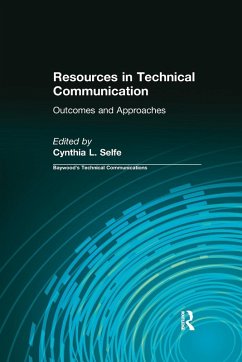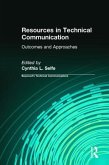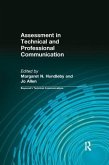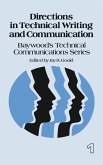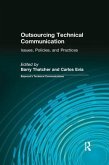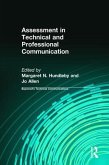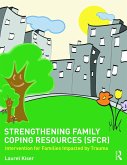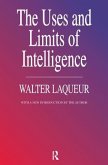- Broschiertes Buch
- Merkliste
- Auf die Merkliste
- Bewerten Bewerten
- Teilen
- Produkt teilen
- Produkterinnerung
- Produkterinnerung
Provides the instructors of introductory technical communication courses with a set of resources for their classrooms.
Andere Kunden interessierten sich auch für
![Resources in Technical Communication Resources in Technical Communication]() Cynthia SelfeResources in Technical Communication190,99 €
Cynthia SelfeResources in Technical Communication190,99 €![Assessment in Technical and Professional Communication Assessment in Technical and Professional Communication]() Assessment in Technical and Professional Communication72,99 €
Assessment in Technical and Professional Communication72,99 €![Directions in Technical Writing and Communication Directions in Technical Writing and Communication]() Jay R GouldDirections in Technical Writing and Communication209,99 €
Jay R GouldDirections in Technical Writing and Communication209,99 €![Outsourcing Technical Communication Outsourcing Technical Communication]() Barry ThatcherOutsourcing Technical Communication63,99 €
Barry ThatcherOutsourcing Technical Communication63,99 €![Assessment in Technical and Professional Communication Assessment in Technical and Professional Communication]() Assessment in Technical and Professional Communication190,99 €
Assessment in Technical and Professional Communication190,99 €![Strengthening Family Coping Resources Strengthening Family Coping Resources]() Laurel KiserStrengthening Family Coping Resources52,99 €
Laurel KiserStrengthening Family Coping Resources52,99 €![The Uses and Limits of Intelligence The Uses and Limits of Intelligence]() Walter LaqueurThe Uses and Limits of Intelligence173,99 €
Walter LaqueurThe Uses and Limits of Intelligence173,99 €-
-
-
Provides the instructors of introductory technical communication courses with a set of resources for their classrooms.
Produktdetails
- Produktdetails
- Verlag: Routledge
- Seitenzahl: 344
- Erscheinungstermin: 7. Februar 2017
- Englisch
- Abmessung: 229mm x 152mm x 19mm
- Gewicht: 499g
- ISBN-13: 9780415440479
- ISBN-10: 0415440475
- Artikelnr.: 49665089
- Herstellerkennzeichnung
- Libri GmbH
- Europaallee 1
- 36244 Bad Hersfeld
- gpsr@libri.de
- Verlag: Routledge
- Seitenzahl: 344
- Erscheinungstermin: 7. Februar 2017
- Englisch
- Abmessung: 229mm x 152mm x 19mm
- Gewicht: 499g
- ISBN-13: 9780415440479
- ISBN-10: 0415440475
- Artikelnr.: 49665089
- Herstellerkennzeichnung
- Libri GmbH
- Europaallee 1
- 36244 Bad Hersfeld
- gpsr@libri.de
Cynthia Selfe
SECTION 1: Focus on Rhetorical Understanding
Chapter 1: Using Client-Based Writing to Teach Problem Solving Art Young
and Summer Smith Taylor
Outcome: Students will be able to understand the value of writing as a
problem-solving activity and learn to solve problems using communication.
Chapter 2: Technical Reports as Rhetorical Practice Jim Kalmbach
Outcome: Students will conceptualize reports as collections of rhetorical
practices and improvisational strategies. Given a specific report template
or format, they will construct a document that respects that template while
also respecting their material and their rhetorical purposes.
Chapter 3: Using Multiple-Source Research to Create Persuasive
Communication Jennifer Shepperd
Outcome: Students will understand the value of conducting both primary,
experientially-based research and secondary-source research as means for
constructing rhetorically situated, persuasive communication.
Chapter 4: Using Design Approaches to Help Students Develop Engaging and
Effective Materials that Teach Scientific and Technical Concepts Anne
Francis Wysocki
Outcome: Students will understand how and why to use design approaches in
the development of technical and scientific communications and will be able
to use different modalities rhetorically in developing communications.
Chapter 5: Copyright Law and Fair Use Pedagogy: Teaching and Learning
Strategies for Technical Communication Courses Michael Moore
Outcome: Students will be able to identify contemporary contexts and issues
in copyright and fair use, and be able to articulate those contexts and
issues for multiple professional audiences
SECTION 2: Focus on Socio-Cultural Understanding
Chapter 6: Preparing Students for Service-Learning Contexts with Case
Studies, Scenarios, and Workplace Writer Studies Teresa Kynell Hunt and
Gerald Savage
Outcome: Students will learn to analyze the contexts of writing tasks
within organizational settings.
Chapter 7: Adapting Communication to Cultural and Organizational Change
Pete Praetorius
Outcome: Students will learn that communicating effectively in the context
of rapidly changing workplaces requires both close attention to
interpersonal communication and an understanding of organizational culture.
Chapter 8: Technological Activism: Understanding and Shaping Environments
for Technology-Rich Communication Richard J. Selfe
Outcomes: Students will understand the technical, economic, institutional,
social, and cultural factors that help shape computer-supported spaces in
which they create, revise, design, and exchange texts. They will be able to
use this knowledge to improve the spaces that they and others use for
communicating.
Chapter 9:Communities of Practice: The Shop Floor of Human Capital Tracy
Bridgeford
Outcome: Students will be able to communicate effectively within and among
communities of practice, demonstrating understanding of how communities of
practice work, how they establish expectations for belonging, and how they
agree on rules for negotiating meaning.
Chapter 10: Analyzing the Interactive Audience: Constructing a Communal
Knowledge Base Ann Kitalong-Will
Outcome: Students will understand how audiences communicate and interact
with businesses and organizations within new digital contexts, and how they
construct communal knowledge bases within such spaces that contribute to
changes in organizational practices.
SECTION 3: Focus on the Complexities of Practice
Chapter 11: Understanding Usability ApproachesJohndan Johnson-Eilola and
Stuart Selber
Outcome: Students will develop a holistic understanding of usability, one
that scaffolds common approaches according to their social complexities.
Chapter 12: An Ethics Primer: Strategies for Ethical Decision Making
Michael Martin
Outcome: Students will acquire a basic vocabulary and methodology for
making ethical decisions in their technical communication practices.
Chapter 13: Select, Interpret, Produce: A Three-Part Model for Teaching
Information Graphics Karla Kitalong
Outcome: Students will critically and competently select, interpret, and
produce information graphics for use in technical documents.
Chapter 14: Listen Up! Oral Presentations in the Technical Communication
Classroom Patricia Freitag
Outcome: Students will be able to author and deliver effective oral
presentations that make appropriate and rhetorically effective use of
available means, media, and modalities.
Chapter 15: Let's Talk: Preparing Students for Speaking and Listening in
the Workplace Gary A. Bays
Outcome: Students will be able to speak and listen in small, informal group
settings and collaborate effectively when presenting material.
Chapter 16: The Elements of Technical Editing: Relationships, Roles, and
Revisions Danielle DeVoss
Outcome: Students will produce better, more polished, more refined prose;
understand the different levels of editing and approaches most appropriate
for each of those levels; and be familiar with the editing approaches most
appropriate for different types of writing and documents.
Chapter 17: Exploding the Cultural Myth of Transparent Communication of
InformationMarilyn Cooper
Outcome: Students will understand that clear communication of information
does not depend on finding language (and images) that will be transparent
in meaning to their readers but rather depends on evoking the contexts in
which documents are used and on working with readers to understand their
needs.
Chapter 1: Using Client-Based Writing to Teach Problem Solving Art Young
and Summer Smith Taylor
Outcome: Students will be able to understand the value of writing as a
problem-solving activity and learn to solve problems using communication.
Chapter 2: Technical Reports as Rhetorical Practice Jim Kalmbach
Outcome: Students will conceptualize reports as collections of rhetorical
practices and improvisational strategies. Given a specific report template
or format, they will construct a document that respects that template while
also respecting their material and their rhetorical purposes.
Chapter 3: Using Multiple-Source Research to Create Persuasive
Communication Jennifer Shepperd
Outcome: Students will understand the value of conducting both primary,
experientially-based research and secondary-source research as means for
constructing rhetorically situated, persuasive communication.
Chapter 4: Using Design Approaches to Help Students Develop Engaging and
Effective Materials that Teach Scientific and Technical Concepts Anne
Francis Wysocki
Outcome: Students will understand how and why to use design approaches in
the development of technical and scientific communications and will be able
to use different modalities rhetorically in developing communications.
Chapter 5: Copyright Law and Fair Use Pedagogy: Teaching and Learning
Strategies for Technical Communication Courses Michael Moore
Outcome: Students will be able to identify contemporary contexts and issues
in copyright and fair use, and be able to articulate those contexts and
issues for multiple professional audiences
SECTION 2: Focus on Socio-Cultural Understanding
Chapter 6: Preparing Students for Service-Learning Contexts with Case
Studies, Scenarios, and Workplace Writer Studies Teresa Kynell Hunt and
Gerald Savage
Outcome: Students will learn to analyze the contexts of writing tasks
within organizational settings.
Chapter 7: Adapting Communication to Cultural and Organizational Change
Pete Praetorius
Outcome: Students will learn that communicating effectively in the context
of rapidly changing workplaces requires both close attention to
interpersonal communication and an understanding of organizational culture.
Chapter 8: Technological Activism: Understanding and Shaping Environments
for Technology-Rich Communication Richard J. Selfe
Outcomes: Students will understand the technical, economic, institutional,
social, and cultural factors that help shape computer-supported spaces in
which they create, revise, design, and exchange texts. They will be able to
use this knowledge to improve the spaces that they and others use for
communicating.
Chapter 9:Communities of Practice: The Shop Floor of Human Capital Tracy
Bridgeford
Outcome: Students will be able to communicate effectively within and among
communities of practice, demonstrating understanding of how communities of
practice work, how they establish expectations for belonging, and how they
agree on rules for negotiating meaning.
Chapter 10: Analyzing the Interactive Audience: Constructing a Communal
Knowledge Base Ann Kitalong-Will
Outcome: Students will understand how audiences communicate and interact
with businesses and organizations within new digital contexts, and how they
construct communal knowledge bases within such spaces that contribute to
changes in organizational practices.
SECTION 3: Focus on the Complexities of Practice
Chapter 11: Understanding Usability ApproachesJohndan Johnson-Eilola and
Stuart Selber
Outcome: Students will develop a holistic understanding of usability, one
that scaffolds common approaches according to their social complexities.
Chapter 12: An Ethics Primer: Strategies for Ethical Decision Making
Michael Martin
Outcome: Students will acquire a basic vocabulary and methodology for
making ethical decisions in their technical communication practices.
Chapter 13: Select, Interpret, Produce: A Three-Part Model for Teaching
Information Graphics Karla Kitalong
Outcome: Students will critically and competently select, interpret, and
produce information graphics for use in technical documents.
Chapter 14: Listen Up! Oral Presentations in the Technical Communication
Classroom Patricia Freitag
Outcome: Students will be able to author and deliver effective oral
presentations that make appropriate and rhetorically effective use of
available means, media, and modalities.
Chapter 15: Let's Talk: Preparing Students for Speaking and Listening in
the Workplace Gary A. Bays
Outcome: Students will be able to speak and listen in small, informal group
settings and collaborate effectively when presenting material.
Chapter 16: The Elements of Technical Editing: Relationships, Roles, and
Revisions Danielle DeVoss
Outcome: Students will produce better, more polished, more refined prose;
understand the different levels of editing and approaches most appropriate
for each of those levels; and be familiar with the editing approaches most
appropriate for different types of writing and documents.
Chapter 17: Exploding the Cultural Myth of Transparent Communication of
InformationMarilyn Cooper
Outcome: Students will understand that clear communication of information
does not depend on finding language (and images) that will be transparent
in meaning to their readers but rather depends on evoking the contexts in
which documents are used and on working with readers to understand their
needs.
SECTION 1: Focus on Rhetorical Understanding
Chapter 1: Using Client-Based Writing to Teach Problem Solving Art Young
and Summer Smith Taylor
Outcome: Students will be able to understand the value of writing as a
problem-solving activity and learn to solve problems using communication.
Chapter 2: Technical Reports as Rhetorical Practice Jim Kalmbach
Outcome: Students will conceptualize reports as collections of rhetorical
practices and improvisational strategies. Given a specific report template
or format, they will construct a document that respects that template while
also respecting their material and their rhetorical purposes.
Chapter 3: Using Multiple-Source Research to Create Persuasive
Communication Jennifer Shepperd
Outcome: Students will understand the value of conducting both primary,
experientially-based research and secondary-source research as means for
constructing rhetorically situated, persuasive communication.
Chapter 4: Using Design Approaches to Help Students Develop Engaging and
Effective Materials that Teach Scientific and Technical Concepts Anne
Francis Wysocki
Outcome: Students will understand how and why to use design approaches in
the development of technical and scientific communications and will be able
to use different modalities rhetorically in developing communications.
Chapter 5: Copyright Law and Fair Use Pedagogy: Teaching and Learning
Strategies for Technical Communication Courses Michael Moore
Outcome: Students will be able to identify contemporary contexts and issues
in copyright and fair use, and be able to articulate those contexts and
issues for multiple professional audiences
SECTION 2: Focus on Socio-Cultural Understanding
Chapter 6: Preparing Students for Service-Learning Contexts with Case
Studies, Scenarios, and Workplace Writer Studies Teresa Kynell Hunt and
Gerald Savage
Outcome: Students will learn to analyze the contexts of writing tasks
within organizational settings.
Chapter 7: Adapting Communication to Cultural and Organizational Change
Pete Praetorius
Outcome: Students will learn that communicating effectively in the context
of rapidly changing workplaces requires both close attention to
interpersonal communication and an understanding of organizational culture.
Chapter 8: Technological Activism: Understanding and Shaping Environments
for Technology-Rich Communication Richard J. Selfe
Outcomes: Students will understand the technical, economic, institutional,
social, and cultural factors that help shape computer-supported spaces in
which they create, revise, design, and exchange texts. They will be able to
use this knowledge to improve the spaces that they and others use for
communicating.
Chapter 9:Communities of Practice: The Shop Floor of Human Capital Tracy
Bridgeford
Outcome: Students will be able to communicate effectively within and among
communities of practice, demonstrating understanding of how communities of
practice work, how they establish expectations for belonging, and how they
agree on rules for negotiating meaning.
Chapter 10: Analyzing the Interactive Audience: Constructing a Communal
Knowledge Base Ann Kitalong-Will
Outcome: Students will understand how audiences communicate and interact
with businesses and organizations within new digital contexts, and how they
construct communal knowledge bases within such spaces that contribute to
changes in organizational practices.
SECTION 3: Focus on the Complexities of Practice
Chapter 11: Understanding Usability ApproachesJohndan Johnson-Eilola and
Stuart Selber
Outcome: Students will develop a holistic understanding of usability, one
that scaffolds common approaches according to their social complexities.
Chapter 12: An Ethics Primer: Strategies for Ethical Decision Making
Michael Martin
Outcome: Students will acquire a basic vocabulary and methodology for
making ethical decisions in their technical communication practices.
Chapter 13: Select, Interpret, Produce: A Three-Part Model for Teaching
Information Graphics Karla Kitalong
Outcome: Students will critically and competently select, interpret, and
produce information graphics for use in technical documents.
Chapter 14: Listen Up! Oral Presentations in the Technical Communication
Classroom Patricia Freitag
Outcome: Students will be able to author and deliver effective oral
presentations that make appropriate and rhetorically effective use of
available means, media, and modalities.
Chapter 15: Let's Talk: Preparing Students for Speaking and Listening in
the Workplace Gary A. Bays
Outcome: Students will be able to speak and listen in small, informal group
settings and collaborate effectively when presenting material.
Chapter 16: The Elements of Technical Editing: Relationships, Roles, and
Revisions Danielle DeVoss
Outcome: Students will produce better, more polished, more refined prose;
understand the different levels of editing and approaches most appropriate
for each of those levels; and be familiar with the editing approaches most
appropriate for different types of writing and documents.
Chapter 17: Exploding the Cultural Myth of Transparent Communication of
InformationMarilyn Cooper
Outcome: Students will understand that clear communication of information
does not depend on finding language (and images) that will be transparent
in meaning to their readers but rather depends on evoking the contexts in
which documents are used and on working with readers to understand their
needs.
Chapter 1: Using Client-Based Writing to Teach Problem Solving Art Young
and Summer Smith Taylor
Outcome: Students will be able to understand the value of writing as a
problem-solving activity and learn to solve problems using communication.
Chapter 2: Technical Reports as Rhetorical Practice Jim Kalmbach
Outcome: Students will conceptualize reports as collections of rhetorical
practices and improvisational strategies. Given a specific report template
or format, they will construct a document that respects that template while
also respecting their material and their rhetorical purposes.
Chapter 3: Using Multiple-Source Research to Create Persuasive
Communication Jennifer Shepperd
Outcome: Students will understand the value of conducting both primary,
experientially-based research and secondary-source research as means for
constructing rhetorically situated, persuasive communication.
Chapter 4: Using Design Approaches to Help Students Develop Engaging and
Effective Materials that Teach Scientific and Technical Concepts Anne
Francis Wysocki
Outcome: Students will understand how and why to use design approaches in
the development of technical and scientific communications and will be able
to use different modalities rhetorically in developing communications.
Chapter 5: Copyright Law and Fair Use Pedagogy: Teaching and Learning
Strategies for Technical Communication Courses Michael Moore
Outcome: Students will be able to identify contemporary contexts and issues
in copyright and fair use, and be able to articulate those contexts and
issues for multiple professional audiences
SECTION 2: Focus on Socio-Cultural Understanding
Chapter 6: Preparing Students for Service-Learning Contexts with Case
Studies, Scenarios, and Workplace Writer Studies Teresa Kynell Hunt and
Gerald Savage
Outcome: Students will learn to analyze the contexts of writing tasks
within organizational settings.
Chapter 7: Adapting Communication to Cultural and Organizational Change
Pete Praetorius
Outcome: Students will learn that communicating effectively in the context
of rapidly changing workplaces requires both close attention to
interpersonal communication and an understanding of organizational culture.
Chapter 8: Technological Activism: Understanding and Shaping Environments
for Technology-Rich Communication Richard J. Selfe
Outcomes: Students will understand the technical, economic, institutional,
social, and cultural factors that help shape computer-supported spaces in
which they create, revise, design, and exchange texts. They will be able to
use this knowledge to improve the spaces that they and others use for
communicating.
Chapter 9:Communities of Practice: The Shop Floor of Human Capital Tracy
Bridgeford
Outcome: Students will be able to communicate effectively within and among
communities of practice, demonstrating understanding of how communities of
practice work, how they establish expectations for belonging, and how they
agree on rules for negotiating meaning.
Chapter 10: Analyzing the Interactive Audience: Constructing a Communal
Knowledge Base Ann Kitalong-Will
Outcome: Students will understand how audiences communicate and interact
with businesses and organizations within new digital contexts, and how they
construct communal knowledge bases within such spaces that contribute to
changes in organizational practices.
SECTION 3: Focus on the Complexities of Practice
Chapter 11: Understanding Usability ApproachesJohndan Johnson-Eilola and
Stuart Selber
Outcome: Students will develop a holistic understanding of usability, one
that scaffolds common approaches according to their social complexities.
Chapter 12: An Ethics Primer: Strategies for Ethical Decision Making
Michael Martin
Outcome: Students will acquire a basic vocabulary and methodology for
making ethical decisions in their technical communication practices.
Chapter 13: Select, Interpret, Produce: A Three-Part Model for Teaching
Information Graphics Karla Kitalong
Outcome: Students will critically and competently select, interpret, and
produce information graphics for use in technical documents.
Chapter 14: Listen Up! Oral Presentations in the Technical Communication
Classroom Patricia Freitag
Outcome: Students will be able to author and deliver effective oral
presentations that make appropriate and rhetorically effective use of
available means, media, and modalities.
Chapter 15: Let's Talk: Preparing Students for Speaking and Listening in
the Workplace Gary A. Bays
Outcome: Students will be able to speak and listen in small, informal group
settings and collaborate effectively when presenting material.
Chapter 16: The Elements of Technical Editing: Relationships, Roles, and
Revisions Danielle DeVoss
Outcome: Students will produce better, more polished, more refined prose;
understand the different levels of editing and approaches most appropriate
for each of those levels; and be familiar with the editing approaches most
appropriate for different types of writing and documents.
Chapter 17: Exploding the Cultural Myth of Transparent Communication of
InformationMarilyn Cooper
Outcome: Students will understand that clear communication of information
does not depend on finding language (and images) that will be transparent
in meaning to their readers but rather depends on evoking the contexts in
which documents are used and on working with readers to understand their
needs.

